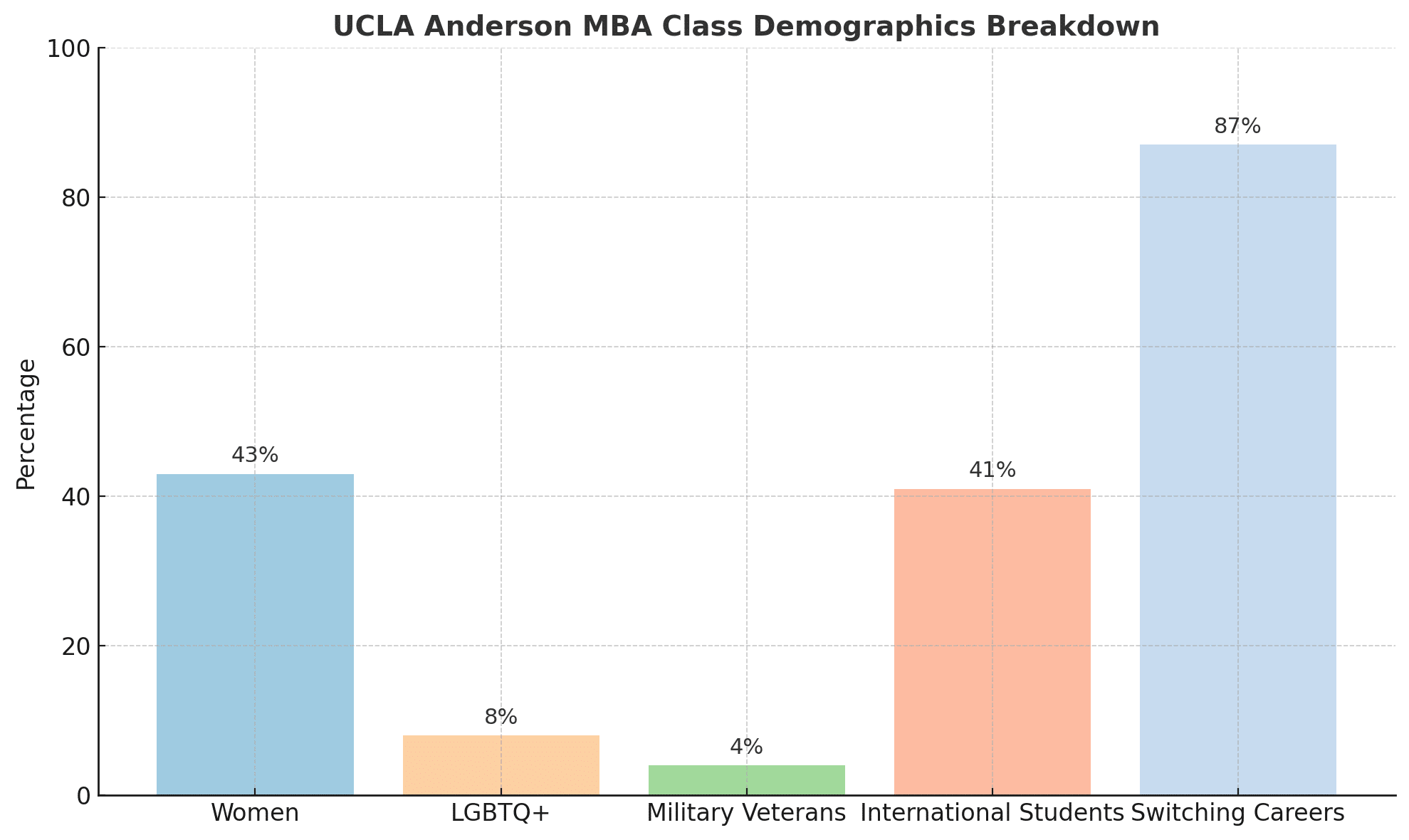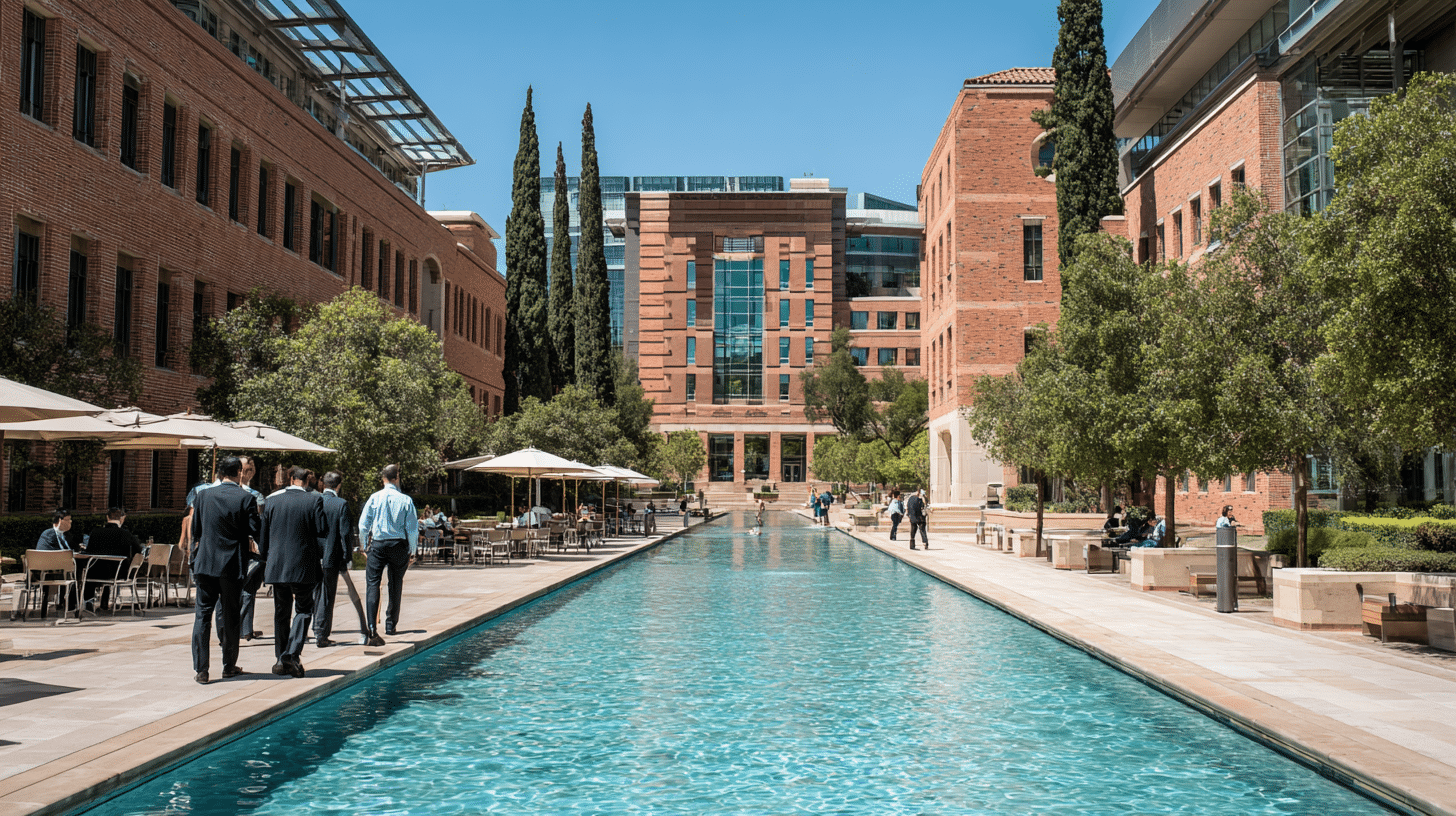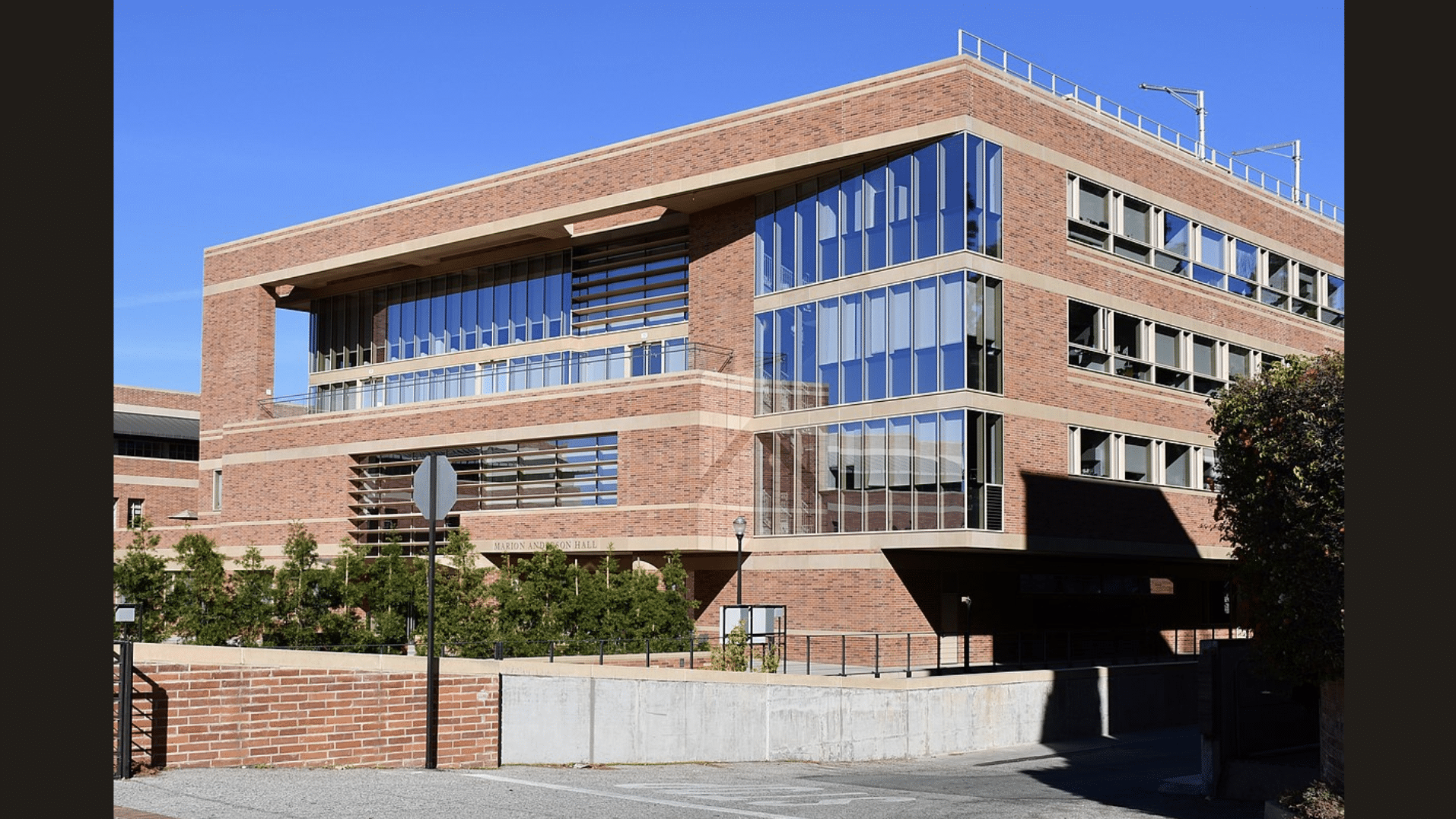If you are someone who wants to pursue an MBA course, it’s highly possible that you have dreamt of or maybe considered applying to the UCLA Anderson School of Management.
And why not?
Consistently recognized as one of the top MBA programs in the United States, UCLA has been drawing thousands of competitive applicants annually.
With the admission rate remaining selective, you might wonder how to improve your chances. It’s important to understand the class profile, admissions statistics, and program offerings deeply.
Don’t worry, we will provide you with an insider’s view of the UCLA Business School Acceptance Rate, academic requirements, and strategies to improve your application, helping you prepare for success.
UCLA Business School Acceptance Rate at a Glance
UCLA Anderson’s MBA acceptance rate is around 37.6% to 40%, reflecting a selective process given the high volume of applications each year, over 2,000 for about 300 seats.
Over the past five years, this rate has remained relatively stable, balancing competitiveness with efforts to admit a diverse cohort.
Compared to other top-tier business schools, Anderson’s acceptance rate is somewhat higher than Ivies but lower than some public-state institutions.
UCLA Anderson MBA Class Profile
This is the recent data from the class of 2026, which highlights a diverse and experienced cohort with strong academic credentials and leadership backgrounds.
Anderson’s focus is on a collaborative and dynamic learning environment.
| Profile Metric | Statistic |
|---|---|
| Total Class Size | 305 |
| Mean GPA | 3.5 |
| Mean GMAT Score | 714 |
| GPA Ranges | 3.1 to 3.8 (Middle 80%) |
| GMAT Ranges | 670-750 (Middle 80%) |
| Average Work Experience | 5.4 years |
| 0-3 years | 17% |
| 3-6 years | 57% |
| 6+ years | 26% |
| GRE Average Combined Score | 327 |
| GRE Verbal Average | 162 |
| GRE Verbal Range | 159-169 |
| GRE Quant Average | 165 |
| GRE Quant Range | 157 – 167 |
Diversity and Demographics Breakdown

Anderson’s class includes roughly 43% women and approximately 41% international students, reflecting a global and gender-diverse community.
Ethnic and racial diversity is actively promoted through targeted recruitment efforts. The average student is around 28 to 29 years old, with a wide range of life and work experiences, which enrich classroom discussions.
Geographically, most students come from the Western United States, particularly California, while also representing various global regions.
When and How to Apply
UCLA Anderson’s admissions process begins with understanding each component and timeline to ensure a complete and timely application.
Online Application Submission
Complete the official UCLA Anderson online application form and pay the application fee of $200. Make sure all sections are thoroughly filled out before submission.
Applications open in early summer (June to July), with deadlines aligned to each round.
Official Transcripts
Request and submit official transcripts from all undergraduate and graduate institutions attended.
This step should be done soon after submitting your application, typically in summer or early fall, to avoid processing delays.
Test Scores (GMAT/GRE/EA Optional but Recommended)
Submit GMAT, GRE, GMAT Focus, or Executive Assessment scores if available. While there is no strict minimum, competitive applicants typically score in the 80th percentile or higher.
Test scores must be from within five years of application. Aim to complete testing by late summer for Round 1 and by fall for Round 2 applications.
Letters of Recommendation
Provide at least two letters of recommendation, preferably from professional supervisors or mentors who can speak to your leadership skills, work performance, and potential for success in an MBA program.
Start this process at least 6-8 weeks before your intended application deadline (June-July for Round 1, September-November for Round 2).
Essay Requirements
Submit essays that address your leadership experiences, career goals, and alignment with UCLA Anderson’s values.
Typical prompts include your reasons for pursuing an MBA, short- and long-term career objectives, and how you plan to grow as a transformative leader.
Complete and submit essays alongside your application, typically between June and January, depending on your application round.
Resume Submission
Upload a detailed resume highlighting your professional experience, accomplishments, and leadership roles. Ensure that your resume aligns with the career goals described in your essays.
Update it regularly through the preparation period leading up to your application deadline (June-April).
Interview Process
Interviews are by invitation only and provide an opportunity for a holistic assessment of your fit with the program.
Being invited to interview signals a strong candidacy, so prepare by articulating your story clearly and confidently.
Interviews usually take place 4-6 weeks after each application round closes; for Round 1, expect interviews in November-December; for Round 2, in February-March.
Application Deadlines and Rounds
UCLA Anderson applications follow a three-round schedule:
Round 1: Early October
Round 2: Early January
Round 3: Late April
Apply in earlier rounds for better chances and scholarship considerations.
UCLA Anderson MBA Program Options

The full-time MBA is the flagship program offering a two-year immersive experience. The school also offers a part-time Fully Employed MBA (FEMBA) for working professionals.
Executive MBA options cater to senior leaders seeking advanced management training.
Students can choose among specialized tracks such as finance, technology leadership, or entrepreneurship, and dual degrees are available with other UCLA schools, including law and public health.
Tuition Costs and Financial Aid
Understanding the financial commitment of the MBA program is key to planning your academic life and checking available funding options.
Tuition Costs or Fees
The financial commitment for the full-time MBA program is significant, reflecting the premium value of the experience and resources offered.
- Annual Tuition: Approximately $66,000 for the full-time MBA program
- Total Cost of Attendance: Around $100,000 per year (includes tuition, fees, housing, food, books, and personal expenses)
Financial Aid Options
UCLA Anderson provides various financial support options to help manage MBA expenses:
- Merit-Based Scholarships: Awarded based on academic achievement, leadership potential, and overall application strength
- Fellowships: Available for specific student profiles or backgrounds, often with separate application considerations
- Need-Based Aid: Assistance provided to students demonstrating financial need through a documented process
- Loan Programs: Various federal and private loan options to help cover tuition and living costs
- Financial Planning Resources: Counseling and support for budgeting, loan management, and repayment strategies
ROI (Return on Investment)
The numbers speak for themselves: Anderson graduates step into the job market with strong earning potential and long-term financial upside.
- Graduates report an average starting salary near $150,000, reflecting competitive compensation across industries.
- Many receive substantial signing bonuses, giving early career financial stability.
- Strong network and career services at Anderson support long-term career and salary growth.
Notable Placement Records
More than 85% of graduates secure employment within three months of graduation.
Average starting salaries vary by industry: technology roles offer around $160,000, consulting $140,000, and finance $130,000.
Leading recruiters include top tech firms, consulting agencies, and financial institutions. Most graduates stay in the Western US, particularly Southern California, leveraging strong local industry ties.
How to Improve Your Admission Chances
Some tips you should follow to increase your chances of admission to UCLA are listed below:
- Strengthen your GMAT or GRE scores through dedicated prep and practice exams.
- Gain meaningful work experience that highlights leadership, impact, and career growth.
- Craft compelling essays that showcase your unique story, values, and fit with Anderson’s collaborative culture.
- Prepare thoroughly for interviews, and practice articulating your goals and contributions clearly.
- Plan your application timeline to allow ample time for revisions and feedback to polish your submission.
The Endnote
Getting into UCLA Anderson requires a strong academic record, substantial professional achievements, and clear leadership potential.
Understanding the acceptance rate and class profile will help you know about your competitiveness and tailor your application accordingly.
Focus on demonstrating how your background aligns with Anderson’s values and prepare strategically for each step of the admissions process.
With careful planning and persistence, you’ll be well-positioned to join this vibrant and supportive MBA community.












